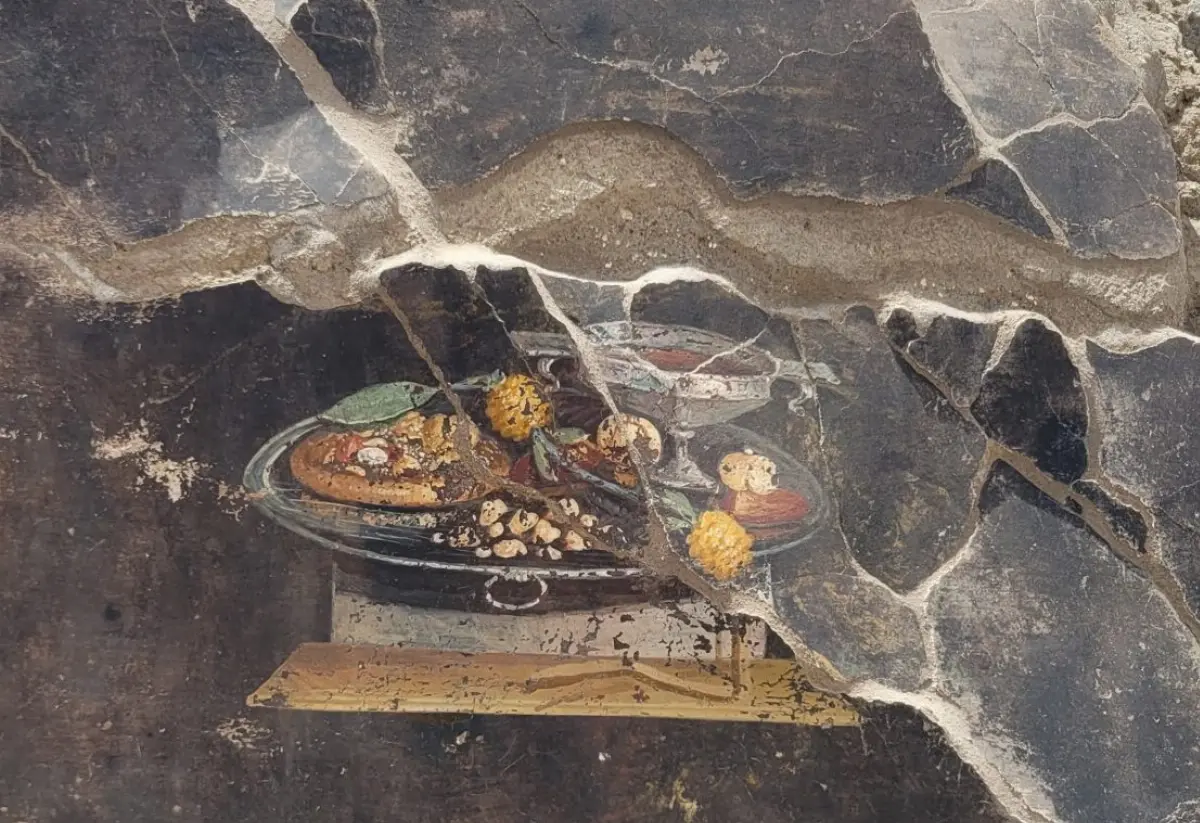
Focaccia or pizza? The dilemma of the fresco found in Pompei
The discovery of the find in the atrium of a house to which a bakery was attached

Focaccia or pizza? No, this time it is not the dilemma of some made-in-Italy gourmand enthusiast. Rather, it is what emerged in the analysis of a still life found in a fresco analyzed during excavations in insula 10 of Regio IX in Pompeii. The fresco was found in the atrium of a house to which a bakery was attached, which had already been explored in part between 1888 and 1891 and whose investigations were resumed last January.
The depiction shows a flatbread served with pomegranate, dates and spices, accompanied by wine, which was offered to guests. As it appears from an initial iconographic analysis what was depicted could be a distant ancestor of modern pizza, elevated to World Heritage status in 2017 as the "traditional art of the Neapolitan pizzaiuolo". An ante litteram pizza, in short, or at any rate a flatbread placed on a silver tray and served with pomegranates, fruit, dates, spices and wine.
According to what the Park's archaeologists explained in an official statement, in the new fresco "a flatbread is supposedly depicted next to a goblet of wine, placed on a silver tray, serving as a support for various fruits (identifiable a pomegranate and perhaps a date), seasoned with spices or perhaps rather with a type of pesto (moretum in Latin), indicated by yellowish and ochre-colored dots. Also present on the same tray are dried fruits and a garland of yellow strawberry trees, alongside dates and pomegranates".
As explained by the director of the Pompei Archaeological Park, Gabriel Zuchtriegel, "in addition to the precise identification of the foods represented we find in this fresco some themes from the Hellenistic tradition, later elaborated by authors of the Roman-Imperial period such as Virgil, Martial and Philostratus. I think of the contrast between a frugal and simple meal, hinting at a sphere between the bucolic and the sacred, on the one hand, and the luxury of silver trays and the refinement of artistic and literary representations on the other. How can we not think, in this regard, of pizza, which also began as a poor dish in southern Italy and has now conquered the world and is served even in starred restaurants".
Known in antiquity as xenia, the fresco depicts "hospitable gifts" that were offered to guests, according to a Greek tradition dating back to the Hellenistic period. A description of this type of iconography can be found in a passage from Virgil's Aeneid, which describes how these types of "pizzas" or flatbreads, were used as containers (canteens). Fruits, spices and what we would nowadays call "condiments" were placed on top.
These "hospitable gifts" were propitiatory and were offered to wish the heroes a new homeland. This is not the first time similar depictions have been found in the Archaeological Park: at present archaeologists have identified about 300.
EFA News - European Food Agency